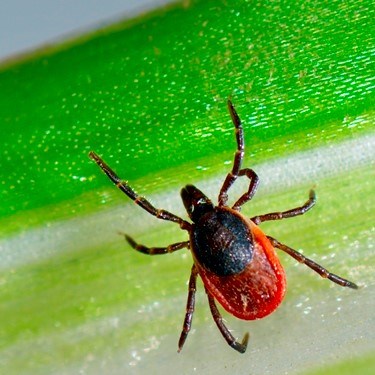With warm weather finally settling in, plenty of people will be spending more time outside as of late — which means now is the time to start doing routine tick checks after an afternoon spent enjoying nature.
Ticks are generally very active in May and June and can remain prevalent until fall, said the Ministry of Health, and it's important for people to protect themselves from the risk of tick-borne diseases.
Ticks tend to thrive in tall grass, brush, or wooded areas. Taking precautionary measures when outside — such as wearing long pants tucked into socks and closed-toed shoes, and avoiding contact with tall grass and bush — are simple ways to prevent ticks from coming home with you.
Experts also recommend wearing light-coloured clothing to easily see ticks crawling on you, and to spray insect repellent that contains DEET or Icaridin, especially on your legs and feet.
When returning home, the first thing to do is search for ticks on both your body and in any gear that went with you outdoors. Perform a full tick check on yourself, children, and your pets, and even shower or bathe to wash off loose ticks.
Another easy way to ensure ticks don’t bother you after you’ve returned home is to put the clothes you were wearing outdoors in the hot dryer or hang them in the sun for at least 15 minutes.
Ticks can be very tiny, so it’s important to be thorough. Different species of ticks can carry different diseases, say experts, and knowing how to identify and remove ticks safely is a matter of public health.
The most common species here in Saskatchewan is the American dog tick, or Dermacentor variabilis, which don’t carry Lyme disease.
Rather, it is black-legged ticks, or Ixodes scapularis, who carry the bacteria that may cause Lyme disease and while they are less common within the province, black-legged ticks have been found within Saskatchewan — and bring with them the risk of disease.
To properly remove a tick that is attached, use a fine-tipped pair of tweezers to grasp the tick as close to your skin as possible and then pull slowly upward with firm pressure.
The Ministry of Health advises not handling the tick with your bare hands, even after removal, and not to squeeze or crush the tick as it could contain infectious fluids.
At this stage, most people would dispose of the tick immediately, but researchers at the University of Saskatchewan are actually asking that you hold onto that tick for their new research — an online tick-tracking project launched in April of this year.
The project, called eTick.ca, features both a website and mobile app where users can submit photos of the ticks that have bitten them, to help researchers track the expansion of certain tick species through the country.
Users can submit photos of their ticks and where they found them, and professionals then identify the species and add it to the cumulative date on the site.
An interactive map plots where and what kind of ticks are being found across Canada, which is updated in real-time, and the entire platform is public and free to use.
At the time of printing, Saskatchewan has submitted a total of 143 ticks found already — none of which are black-legged ticks — and researchers encourage people to get on board with the project and participate.
The data accumulated will be helpful for health officials, but it's also a handy resource to use when planning outdoor adventures — taking a look at eTick.ca can tell where the potential tick hotspots may be, so you can avoid tangling with any unwanted guests on your next hike.




